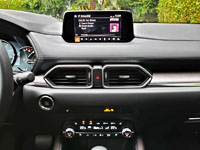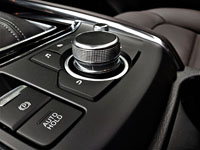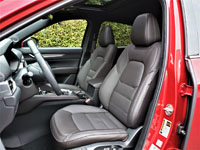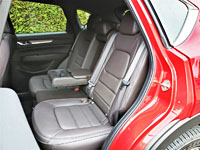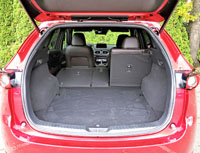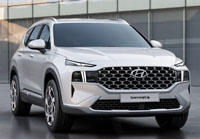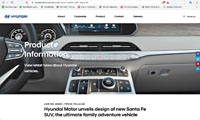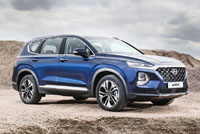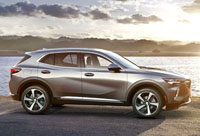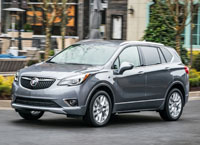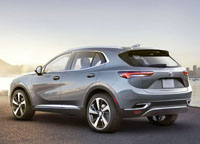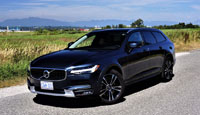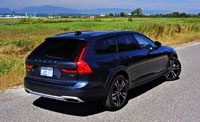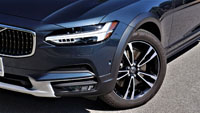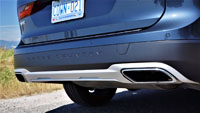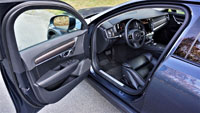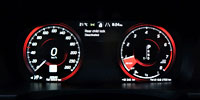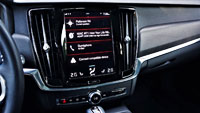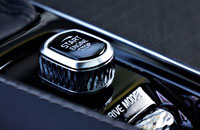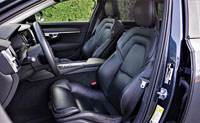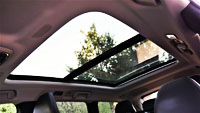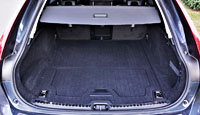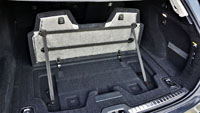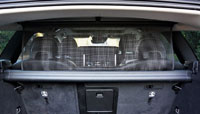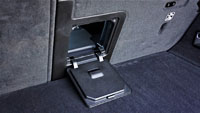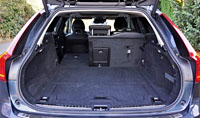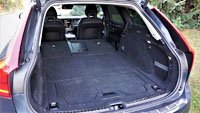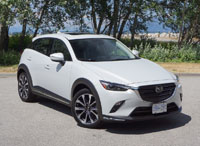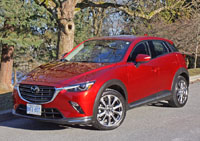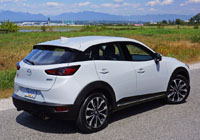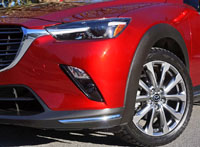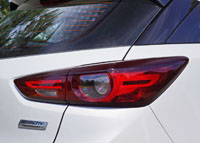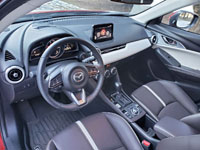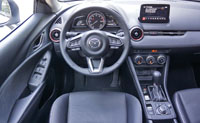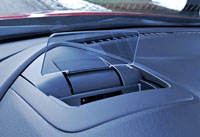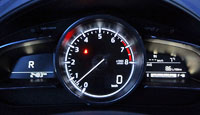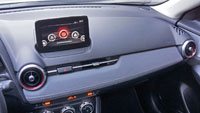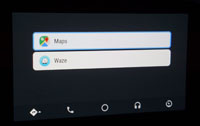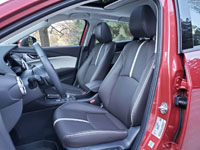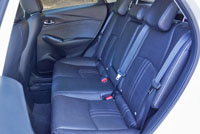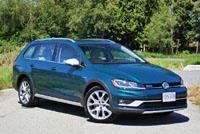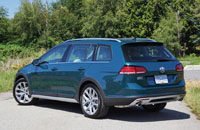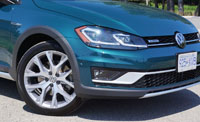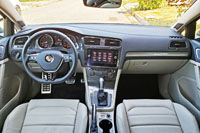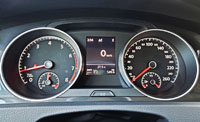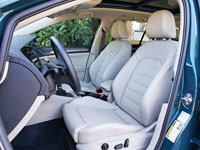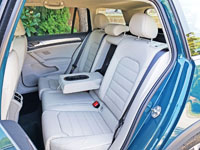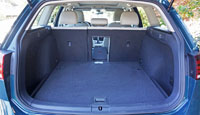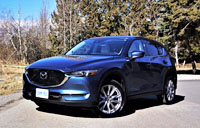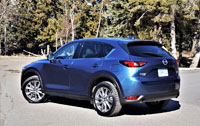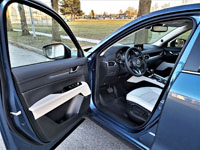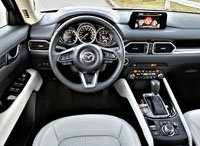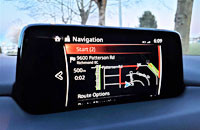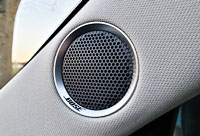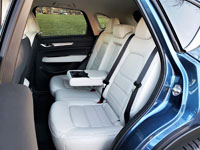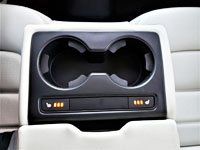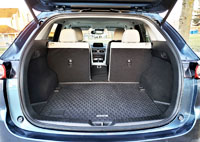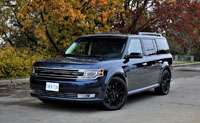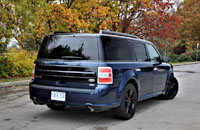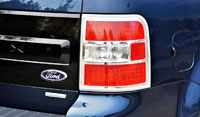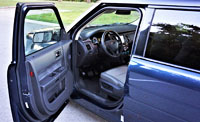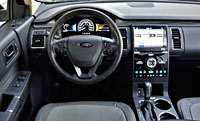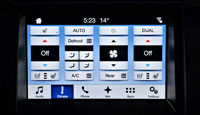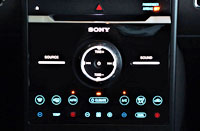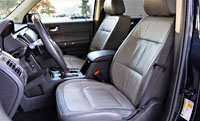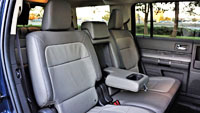
If you haven’t considered the XC40 before, you’re in for a treat. It’s the smallest Volvo available, fitting into the subcompact luxury SUV segment and therefore going up against BMW’s X1, Mercedes’ GLA and B-Class, Lexus’ UX and others, plus due to the Swedish brand no longer offering a compact hatch (the C30 was discontinued in 2013 and its V40 successor was never imported), this little crossover is now its entry-level model.
I, for one, am a big fan of this little SUV. It’s stylish, fun to drive, thrifty, well made, and as innovative as crossover sport utilities come. In case you didn’t know, the XC40 has been around since the 2020 model year, and full disclosure forces me to let you in on the fact that this test model is actually a 2020. Fortunately, changes to the 2021 XC40 are minimal, with my tester’s Amazon Blue exterior colour choice unfortunately being discontinued this year.
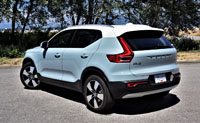
As much as I like it, Amazon Blue won’t be popular with manly men, as it’s a bit on the feminine side. This said, I’ve seen a few around and they’re quite catching. In fact, this metrosexual boomer had no issue being seen in the powdery blue SUV, especially when push came to shove and I was able to scoot away from stoplight oglers as if they were standing still.
Yes, the XC40 is mighty quick thanks to 248 horsepower and 258 lb-ft of torque in as-tested T5 trim, its eight-speed automatic shifting gears quickly yet smoothly, its all-wheel drive completely eliminating tire slip, and its lightweight mass making the most of the available energy output. This is a really fun SUV to drive, the optional 2.0-litre turbo-four always willing to jump off the line or say so long to slower moving highway traffic. This said, my test model’s Momentum trim comes standard with a less potent version of the same engine, the T4 model powering all wheels with 187 horsepower and 221 lb-ft of torque, which should be good enough for all but the most enthusiastic of speed demons.
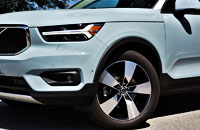
The eight-speed auto includes a gas-sipping auto start/stop system that aids the T4 in achieving a 10.2 L/100km city, 7.5 highway and 9.0 combined fuel economy rating, whereas the T5 gets a claimed 10.7 in the city, 7.7 on the highway and 9.4 combined. I recommend Eco mode for extracting the most efficiency, of course, but default Comfort mode is quite thrifty too. Volvo also includes a Dynamic sport setting when needing to get somewhere quickly, whereas an Individual mode can be set up for your own personal driving style.
While I really like the as-tested Momentum model, especially with its upgraded 235/50 all-season Michelin tires on 19-inch wheels that certainly improve performance over the base model’s 18-inch 235/55s, I’d put my own money on an XC40 R-Design for the paddle shifters alone (although it also comes standard with the T5 all-wheel drivetrain, and is the only trim that can be had in new Recharge P8 eAWD Pure Electric power unit), these helping to make this sporty little SUV a lot more engaging at the limit.
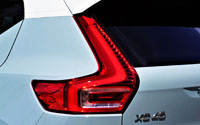
That’s where the so-equipped XC40 really shines, its handling fully capable when pushed hard and overall grip surprisingly steadfast, especially when considering its excellent ride quality. Even when slicing and dicing this little cutie through some local mountain backroads it never caused concern, while in-town point-and-shoot manoeuvres were a breeze made even easier thanks to the SUV’s generous ride height. It’s all due to a fully independent suspension with front aluminium double wishbones and an integral-link rear setup, composed of a lightweight composite transverse leaf spring.
Even better from a luxury standpoint, the XC40 feels like it was honed from a solid block of aluminum alloy, the body’s structural integrity never in doubt. I appreciated the SUV’s quiet, hushed, big SUV experience despite its diminutive size, this cocooning quality complemented by properly insulated doors that thunk closed in an oh-so satisfying way, and refinement that goes a step above most subcompact luxury SUV peers.
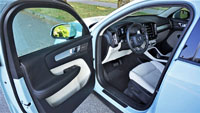
For a moment, pull your eyes away from the exterior’s classic crested Volvo grille, stylishly sporty Thor’s hammer LED headlamps, sharply honed front fascia, and uniquely tall “L” shaped LED tail lamps, not to mention the satin-silver accents all-round, and instead focus on this little crossover’s luxuriously appointed interior. Keeping in mind this is the XC40’s most basic of trims, Momentum gets very close to R-Design materials quality, featuring such premium staples as fabric-wrapped roof pillars, a soft, pliable dash-top covering and equally plush door panels, stitched leather armrest pads, and carpeted door pockets (that are big enough to slot in a 15-inch laptop along with a large drink bottle).
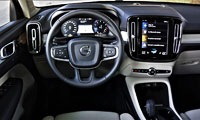
Don’t expect such niceties below the waistline, but Volvo uses a soft-painted harder composite that feels nice, while the woven roof liner looks good and surrounds an even more appealing panoramic sunroof featuring a powered translucent fabric sunshade. You’ll find controls for the latter on a nicely sorted overhead console, otherwise filled with LED lights hovering over a frameless rearview mirror.
Following Volvo tradition, the driver’s seats is wonderfully adjustable and wholly comfortable no to mention supportive, with more than adequate side bolstering plus extendable lower cushions that cup under the knees nicely (a favourite feature of mine). The leather used to cover all seats is above par, by the way, and they come with the usual three-way warmers up front, plus a steering wheel rim heater.

Most body types should fit into this little ute without issue, whether positioned front or back, while the rear seats expand the relatively generous cargo hold—from 586 litres (20.7 cubic feet) to 917 litres (32.4 cubic feet)—via the usual 60/40 division. This said a highly useful centre pass-through provides stowage of longer items like skis when two rear passengers want to use the more comfortable window seats.

While all this is very good, Volvo wasn’t merely satisfied to provide the expected luxury, performance and styling elements to their entry-level ute and call it a day, but instead went the extra measure to include a lot of handy innovations that make life easier. Being that I left off in the cargo compartment, I might as well star this section of the review off by noting the useful divider housed within the cargo floor. Once lifted up into place to stand vertically, I found it especially helpful for stopping groceries from escaping their bags, particularly when using the three bag hooks on top to keep them in place.
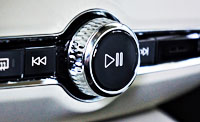
Moving up front you’ll find another handy hook within the glove box, which can be pivoted into place when wanting to hang a purse, garbage bag or what-have-you, while just to the left of the driver’s knee are two tiny slots for stowing gas cards. The XC40 can be had with all the segment’s best electronic helpers too, like a powered rear hatch that automatically lifts when waving a foot under the rear bumper, automated self-parking, and all the latest driver aids like autonomous emergency braking for the highway and city, lane change alert with automated lane keeping, etcetera, but some might find the XC40’s standard gauge cluster even more compelling.
It’s fully digital right out of the box, measuring 12.3 inches and sporting a graphically animated speedometer and tachometer plus a big centre information display featuring integrated navigation mapping with actual road signs, phone info and the list goes on. Like some competitive clusters, the multi-information display can be set to take over the majority of the driver display, thus shrinking the primary instruments. It’s a superb system that I almost like as much as Volvo’s Sensus infotainment system.
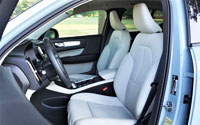
The latter is comprised of a 9.0-inch vertical touchscreen that comes closest to mimicking a tablet than anything else in the auto industry, especially when utilizing Apple CarPlay (not so much for Android Auto). Being that I currently use a Samsung, I keep the Volvo interface in play at all times, and absolutely love the audio “page” that not only shows all SiriusXM stations nicely stacked in sequence, but real-time info on which artist and song is playing. This way you can quickly scan the panel and choose a station, never missing a favourite song.
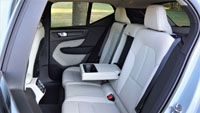
The base audio system is impressive too, as is the active guideline-infused parking camera, especially if the overhead version is included, and nav directions are always spot on, while the as-tested dual-zone climate control interface is ultra-cool thanks to colourful pop-up menus for each zone’s temperature setting and an easy-to-use pictograph for directing ventilation.
A list of standard Momentum features not yet mention include remote start from a smartphone app, rain-sensing wipers, cruise control, rear parking sonar with a visual indicator on the centre display, Volvo On Call, all the expected airbags including two for the front occupants’ knees, plus more, all for only $39,750 plus freight and fees.
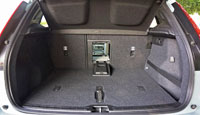
If you’d like to save thousands more, make sure to check out CarCostCanada that will show you how to immediately knock off $1,000 from a 2021 XC40 and keep up to $2,000 in additional incentives from a 2020 model. CarCostCanada provides members with real-time manufacturer leasing and financing info too, plus manufacturer rebate info, and best of all, dealer invoice pricing that could save you thousands more. Find out how the CarCostCanada program works, and be sure to download the free CarCostCanada app from the Google Play Store or the Apple Store.
No matter the price you pay, the XC40 is a compact luxury SUV worth owning. It combines a higher level of refined luxury than most peers and superb performance all-round, with plenty of style and practicality. This is a crossover I could truly live with day in and day out, even painted in my tester’s playful powder blue hue.
Story and photos by Trevor Hofmann

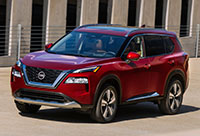
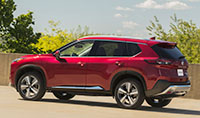



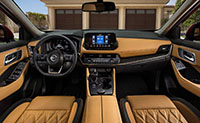
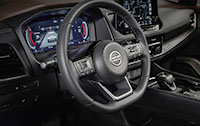

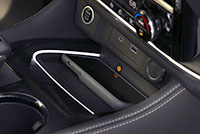
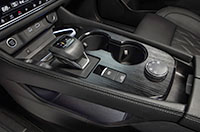
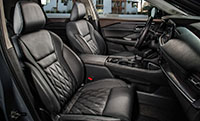
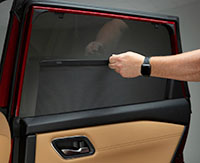
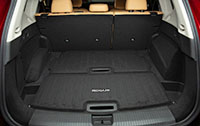
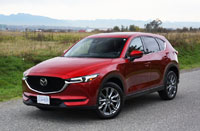
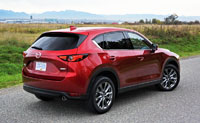
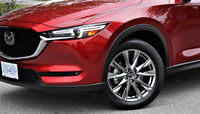

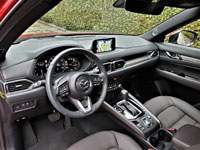
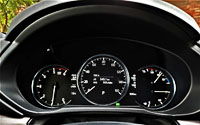 To this end, the SkyActiv-D turbo-diesel suits an upwardly mobile brand like Mazda better than some others, being that diesels have long been the stuff of Mercedes-Benz, Audi, and BMW, plus more recently Jaguar and Land Rover. I’d be remiss not to mention Volkswagen again, because not too long ago oil burners made up more than half of their Canadian sales, but now all of the just-noted German brands are on a different trajectory, embracing plug-in electric mobility at a much greater development cost and no sure promise of profits (even mighty Tesla had never managed more than two sequential quarters of profits as of this review’s publication date).
To this end, the SkyActiv-D turbo-diesel suits an upwardly mobile brand like Mazda better than some others, being that diesels have long been the stuff of Mercedes-Benz, Audi, and BMW, plus more recently Jaguar and Land Rover. I’d be remiss not to mention Volkswagen again, because not too long ago oil burners made up more than half of their Canadian sales, but now all of the just-noted German brands are on a different trajectory, embracing plug-in electric mobility at a much greater development cost and no sure promise of profits (even mighty Tesla had never managed more than two sequential quarters of profits as of this review’s publication date).